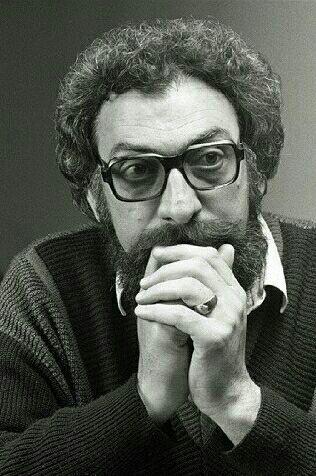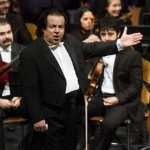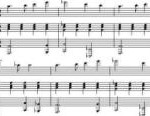
Translated by Mahboube Khalvati
Amidst the popularity of traditionalism in the Iranian music, Parviz Meshkatian (1955- 2009) moved from Neyshabur to Tehran. He learnt to play Santour and became educated in the Radif of Iranian music at the Centre for Preservation and Promotion of Music which was at the forefront of promoting the return to musical traditions. Despite his studies at a centre which promoted the use of the phrase “traditional music” in Iran, Parviz Meshkatian emerged as a creative artist whose innovative and unique ideas attracted the admiration of Iranian artists and people from different walks of life. This article studies the reason behind Meshkatian’s deviation from the wrong approach of traditionalism strongly promoted by the Centre and argues that apart from the issue of theory of Iranian music, he can be considered as Ali Naqi Vaziri’s successor.
Unlike many students at the Center for Conservation and Promotion of Music and the University of Fine Arts (whose approach to the Iranian music was similar to that of the Center for Conservation and Promotion of Music), Parviz Meshkatian was not only influenced by the traditionalist and anti-West atmosphere of the time, but also by the family culture and interaction with the elite took a different approach which eventually led him to a different course in his career.
In 1978, a year before the Islamic Revolution in Iran, Meshkatian formed an ensemble called “Aref” in collaboration with Hossein Alizadeh (b.1973), who, like himself, was educated at the Centre for Conservation and Promotion of Music; however, Alizadeh had new tendencies. Meshkatian and Alizadeh’s ensemble was named after the constitutional era composer and lyricist Abolqassem Aref Qazvini (1882-1934). Aref Ensemble was established parallel with Sheida Ensemble named after a Qajar musician and lyricist Ali Akbar Sheida (1844-1906) and founded by Mohammad Reza Lotfi (1947-2014). The names they had chosen for their ensembles suggested that they intended to work in line with the school of thought of the Centre for the Preservation and Promotion of Music and re-perform the works by diseased musicians. As time passed, they changed their path though.
After the protests on 8 September 1978 (17 Shahrivar 1357) and killing of the protestors by the Shah regime in Jaleh Square in Tehran, Meshkatian and some of the musicians of his ensemble together with Sheida Ensemble joined the wave of people who wanted change and established Chavosh Institute. In Chavosh Institute these musicians worked together and put aside their differences of opinions on issues such as Qajar music and different methods of playing Satour, etc. Their concern was the needs of the elite and the ideals which required the empathy and support of a larger number of people.
Meshkatian’s music was, therefore, informed by the culture and the humane aspects of life. After the Islamic Revolution 1979, the extent of Meshkatian’s activities expanded and he became almost as prolific as the other great Iranian Santour player and composer, Faramarz Payvar. Meshkatian’s works were published little by little and won the hearts of the people and the admiration of artists and the elite.









